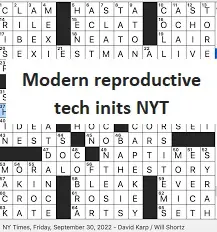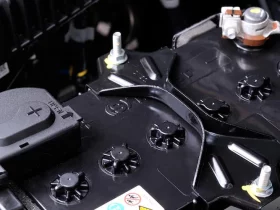Reproductive technology has made great strides in recent years, offering many people the opportunity to conceive a child who otherwise may not have been able to do so.
In fact, The New York Times (NYT) has recently highlighted several new and innovative reproductive technologies that are changing the landscape of assisted reproduction.
In this blog post, we will discuss modern reproductive tech inits nyt, their benefits and drawbacks, and what they mean for the future of fertility treatments.
The Benefits of Modern Reproductive Technologies
Modern reproductive technologies offer many benefits to people who are struggling to conceive. For example, they provide options for individuals who have fertility issues due to age, medical conditions, or lifestyle factors.
Additionally, they can help same-sex couples, single parents, and those who have undergone cancer treatment to start families.
The Latest Advancements in Assisted Reproduction
In Vitro Maturation (IVM)
In vitro maturation (IVM) is a new technique that allows doctors to collect immature eggs from a woman’s ovaries and mature them in a lab before fertilizing them with sperm.
This technique is less invasive and less expensive than traditional in vitro fertilization (IVF) because it requires fewer medications and does not require a woman to undergo hormonal stimulation.
In Vitro Gametogenesis (IVG)
In vitro gametogenesis (IVG) is a groundbreaking technology that involves creating eggs or sperm from skin cells. This technique has the potential to help those who are infertile due to genetic conditions or cancer treatment. It can also offer same-sex couples the opportunity to conceive biological children without a donor.
Preimplantation Genetic Testing (PGT)
Preimplantation genetic testing (PGT) is a technique used in conjunction with IVF to screen embryos for genetic abnormalities before they are implanted in the uterus. PGT can help prevent genetic diseases from being passed down to future generations and increase the success rates of IVF.
Mitochondrial Replacement Therapy (MRT)
Mitochondrial replacement therapy (MRT) is a new technique that involves replacing the mitochondria in a woman’s eggs with healthy mitochondria from a donor. This technique can help prevent the transmission of mitochondrial diseases from mother to child.
The Drawbacks of Modern Reproductive Technologies
While modern reproductive technologies offer many benefits, they also have some drawbacks. For example, they can be expensive, time-consuming, and emotionally challenging. Additionally, some people may have ethical or religious concerns about the use of certain technologies.
The Future of Fertility Treatments
As technology continues to advance, we can expect to see even more innovations in the field of reproductive medicine.
For example, scientists are currently working on techniques to create artificial sperm and eggs, which could revolutionize the way we think about fertility.
Additionally, we may see new technologies that allow us to predict the likelihood of success with certain treatments, making it easier for patients to make informed decisions about their care.
Conclusion
Modern reproductive technologies have the potential to change the lives of many people who are struggling to conceive.
From in vitro maturation to mitochondrial replacement therapy, these advancements offer new options for those who want to start a family.
While they are not without their drawbacks, they represent an exciting step forward in the field of reproductive medicine, and we can expect to see even more groundbreaking innovations in the years to come.









Leave a Reply